He makes a very cute campaign video. Please watch it above. It's quite clever. But it would be nice if California Secretary of State candidate Derek Cressman, one of two Democratic candidates vying for the job in the upcoming June 3rd primary, had a better understanding of the electronic voting systems he'd be overseeing as SoS.
I had originally intended to run the video above, because it's smart and fun, along with a throw-away remark expressing the wish that Cressman understood more about the very technical concerns about the security and verifiable of e-voting system --- particularly since the way CA deals with them has such a sweeping effect on the same systems as used across the country.
As a former Common Cause executive, Cressman has made his important fight to overturn the Supreme Court's abhorrent Citizens United ruling central to his campaign, as highlighted in the animated campaign video above. That's fine, but the office of Sec. of State, particularly in CA, requires much more.
Rather than offer that throw-away remark, however, I thought I'd see if Cressman had learned more about electronic voting systems since he and I briefly chatted in person at an event last summer, just as he was originally entering the race.
According to comments he sent in response to a recent query from The BRAD BLOG, while Cressman's general knowledge of the systems seems to have improved since we last spoke, and while he remains an ardent opponent of the madness of Internet Voting and some of the most unsecure methods of precinct-based voting, his understanding of the concerns about the vulnerability of e-voting remains troubling --- at least for a Sec. of State candidate in the nation's most populous state...
Choices slim to none for Election Integrity advocates in CA
The options for Sec. of State in CA this year to replace outgoing term-limited Debra Bowen are vanishingly bleak. One leading Democrat, state Sen. Leland Yee, was recently arrested on federal arms trafficking charges. No big loss there, as Yee had, insanely, been a supporter of Internet Voting, at least until a few voting systems expert quietly attempted to educate him on its unsolvable perils.
There are five other active candidates who remain in the race. One is Green Party candidate David Curtis, who I interviewed last week on KPFK/Pacifica Radio after he had been excluded from a debate that day held by the Sacramento Press Club, despite having placed third in a recent Field Poll [PDF].
The candidates who came in fourth and fifth in that same poll --- Dan Schnur, a long-time Republican operative now running as an "independent" and Cressman, respectively --- were invited to participate, but Curtis was not. As he confirmed during our live interview, Curtis still sees Internet Voting in the future as potentially viable, despite our Twitter conversation last month in which I explained to him how such voting systems remain 100% unverifiable. That initial conversation was before disclosure of the OpenSLL "Heartbleed" vulnerability came to light, revealing that hundreds of millions of Internet users had put their private financial and personal information at risk of public disclosure for years, without knowing it, via the previously-trusted open source encryption system used by many supposedly secure financial and online commerce sites.
Currently leading that recent Field Poll is Republican Pete Peterson, a public policy adviser at the Pepperdine University's Davenport Institute (which is funded in part by Charles Koch). Peterson calls for the use of more technology in elections, which, in and of itself, is not all bad (for example, voter registration can be done securely online, as can tracking of absentee/Vote-by-Mail ballots and other public notification systems), but seems to use code words for "Internet Voting" in his advocacy for the use of "e-signatures" for military and overseas voters.
And then there's state Sen. Alex Padilla, trailing Peterson and currently the leading the Democratic pack, according to the Field Poll. We've written at some length about Padilla and SB 360, the dangerously radical election reform bill which he successfully championed last year --- and mislead voters about. The new law, signed by Gov. Jerry Brown (D) last October, does away with all federal testing of voting systems in CA and gives sweeping, new executive powers to the Sec. of State to approve new e-voting systems for use in real elections without being certified at either the federal or even state level. While that is a horrible enough idea, it is even more dangerous given that Los Angeles County --- the nation's largest voting jurisdiction --- is in the process of developing its own new, 100% unverfiable touch-screen voting system.
So what about Cressman?
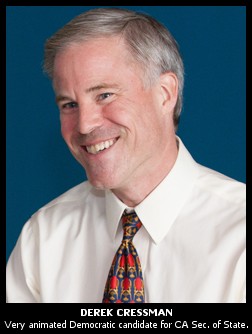 With all of that, we thought we'd dig in to learn more about the evolution of Cressman's views on electronic voting as well as his views on Padilla's horrible SB 360, which passed since we last spoke with Cressman. The bill may very well make e-voting systems even less secure than they already are in California and even elsewhere in the country, since systems developed here are then sold to the rest of the country (as Los Angeles County has indicated they hope to do). The CA Sec. of State race this year has big national implications.
With all of that, we thought we'd dig in to learn more about the evolution of Cressman's views on electronic voting as well as his views on Padilla's horrible SB 360, which passed since we last spoke with Cressman. The bill may very well make e-voting systems even less secure than they already are in California and even elsewhere in the country, since systems developed here are then sold to the rest of the country (as Los Angeles County has indicated they hope to do). The CA Sec. of State race this year has big national implications.
To that end, I recently sent Cressman two questions: "1) What are you concerns about the voting systems currently in use in CA, and 2) Do you support SB 360? If so, why? If not, why not, and what do you plan to do about it if elected?"
He was kind enough to respond quickly to my questions. Here is Cressman's initial response in full:
2) I see both opportunities and perils in SB 360. Some early versions were especially problematic and some of the statements by the bill's author [Padilla] indicated he didn't fully understand either the bill or our current voting systems. Open source programming and developing a publicly licensed voting system has some promise to free California from the hands of private, black box voting equipment vendors who overcharge and under deliver. However, as we've seen with the recent heartbleed vulnerability in Open SSL, open source is not a panacea and we will need to test and certify any open source voting systems vigorously. It is unclear how long the federal EAC [Elections Assistance Commission, currently responsible for certification testing of voting system at the federal level --- though now ignored completely in CA, thanks to SB 360], will exist, although it now does look like some new commissioners are being confirmed which is a good sign, so placing all of our hope in that agency may not be well advised. It is also unclear who our next Secretary of State will be, so placing certification solely in the province of that office carries some unknown risks as well and heightens the importance of having a real expert in the office who is committed to election integrity and not merely using the office as a stepping stone to run for something else.
I'll try not to get too deep into the weeds here, but several of Cressman's comments require response, as they indicate a disturbing lack of understanding of California's (and the nation's) electronic voting systems.
In his response to the first question, Cressman noted his concern about "touchscreen voting machines that lack a voter verified paper ballot." In fact, as he suggested, that "number is small", thanks to current SoS Bowen decertifying most such systems in the state after taking office in 2007 and commissioning a "Top to Bottom Review" which found that all such systems are very easily defrauded in such a way that they can be used to flip entire elections in minutes with little chance of detection. The touchscreen systems of the type to which he is referring, however, do not produce a "voter verified paper ballot". They produce what is called a "Voter Verifiable Paper Audit Trail" or VVPAT. It is not a ballot, and there is no way to know after an election if a voter has "verified" it or not.
Such paper audit trails may be verified by the voter as accurately reflecting their cast ballot, but it is 100% impossible to know if a) what is on that VVPAT is actually recorded by the computer itself as per the voter's intent and b) whether any vote ever cast on such a voting system during any election, for any candidate or initiative on the ballot, has ever been registered as per any voter's intent. That is why The BRAD BLOG has long described --- accurately --- Direct Recording Electronic (DRE, usually touch-screen) voting systems as being 100% unverifiable. After the polls close, it is impossible to verify that a single vote was recorded accurately as per any voter. That is true whether such systems produce a so-called VVPAT or not.
In CA, touch-screen voting systems are required to produce a VVPAT with each electronic ballot that is cast. That requirement, however, is no guarantee that the computer recorded any of those votes accurately. Moreover, as Bowen's landmark 2007 study found, even touch-screen voting systems that produce VVPATs can be hacked, in seconds time, in such a way that even a manual review of all of the VVPATs could fail to reveal the manipulation. (See how it's done in this UC Santa Barbara Computer Security Group's demonstration video, created for Bowen's 2007 study.)
A touch-screen DRE system with a VVPAT is as unverifiable as those which don't produce that type of "paper trail", as is the case with many such systems still in use in many states across the country.
Moreover, as I've described in detail previously, the type of touch-screen system known as a Ballot Marking Device (BMD) --- the type that Los Angeles County is currently said to be developing --- is equally unverifiable after an election. While a BMD differs from a DRE, in that it creates a computer-printed paper ballot (as opposed to a VVPAT) which is then tabulated by another means, such as an optical-scan computer tabulator, rather than internally tabulated by the touch-screen system itself, such systems are also 100% unveriflable after an election.
The easiest example to help explain this, one that I shared with Cressman in a follow-up note, was from my own personal experience voting here in Los Angeles during our statewide primary back in 2008. At the time, I used the county's optional electronic voting system for disabled voters. That system creates a computer-printed ballot which is then optically-scanned for tabulation by a different computer. Though the county's current InkaVote Plus system for disabled voters records voter input via a push-button response to an audio ballot, rather than via touch-screen, as the new BMD system they are developing is set to, it still prints out a paper ballot on which it is impossible for citizen overseers after an election to discern if the votes printed by the computer actually reflect the intent of the voter. That is different than hand-marked paper ballots which are, by their very nature, verified by the voter at the time they are filled out, and easy to tell if they have been manipulated by someone afterward.
In my case, as I described after voting in 2008, the computer managed to print 4 out of 12 of my ballot selections incorrectly that year! It printed out selections for candidates other than those which I had selected via the computer system!
While the system I voted on was primarily meant for blind voters, I was able to examine the computer-printed ballot and eventually notice the incorrectly printed votes. Blind voters, of course, wouldn't have been able to do that. More disturbingly, as studies have shown from CalTech/MIT to Rice University, most voters don't bother to check their computer printouts once they've cast their votes on the computer, and, of those few who do bother to check the computer summary at the end of the voting process, only one-third of them notice when a vote of theirs has been flipped by the computer!
After attempting to point these issues out to Cressman in a follow-up email, just to make sure he fully understood that all such systems (DREs with or without a VVPAT, as well as BMDs) were 100% unverifiable by citizens after the close of polls, he responded as follows:
Common Cause, the non-partisan, left-leaning advocacy organization where Cressman was Vice President of State Operations for years, has long made a distinction between "paperless touchscreens" and those that produce a VVPAT, as if one was more verifiable than the other. That fallacy has been abandoned by many other election integrity organizations over time, but it's not surprising that Cressman would still use that same "paperless" wording, which is, in truth, a distinction-without-a-difference. It is meant to suggest that, as he says, a VVPAT touch-screen system is somehow superior than a non-VVPAT system. Indeed, we do "disagree" with his characterization of such systems, have even argued that VVPAT systems give a very false sense of security versus non-VVPAT systems, and believe that a Sec. of State candidate ought to be able to fully appreciate those differences and dangers.
As he says, however, "you may disagree".
As to Cressman's answer to my second question, concerning SB 360, he is correct about the inherent, and often under-appreciated dangers of "open source" computer voting and tabulation systems. Those too can serve to offer voters a false sense of security for elections which could well go manipulated without notice, for years, just like the "Heartbleed" bug.
As to SB 360 itself, while, as he notes, minor improvements were made to the bill as it rolled through legislative committees in Sacramento, it actually got largely worse, not better, the farther it rolled. As we documented in detail last year, what started as a 4-page bill needed in order to release funds to L.A. County to help with their development of a new voting system quickly became a 39-page mess that completely rewrote huge chunks of the CA Election Code, did away with the need for all federal testing and certification requirements by the U.S. Elections Assistance Commission (EAC) for CA voting systems, and gave unprecedented executive power to a single Secretary of State to approve new voting systems for use in elections without even state-level certification.
In his initial response, Cressman noted his concerns about whether Republicans in Congress may do away with the EAC entirely, as they have long attempted, including going so far as to block the appointment of any commissioners to the agency for years. Nonetheless, even without commissioners, as I detailed in a report last year following an exclusive interview with L.A. County Registrar/Recorder/Counter Clerk Dean Logan, EAC certification testing has continued apace, as directly confirmed to The BRAD BLOG by several different EAC officials, including their Director of Testing and Certification.
While Cressman is correct in noting that "placing all of our hope in that agency may not be well advised," the pre-SB 360 testing regime in CA required voting system certification at both the federal and state level before systems could be used in state elections. So "all of our hope" was never, legislatively, placed solely in the EAC when it came to certifying systems for use in CA. In fact, under the previous election code, the state was not even allowed to consider certification of systems until they had already received federal certification.
"We cannot rely indefinitely upon the EAC as the sole safeguard for our elections," Cressman told me in a follow-up note. But we never relied on them as "the sole safeguard". The California Sec. of State was always required, long before SB 360, to create his or her own testing and certification regime.
Now, however, the certification processes will be placed in the hands of one person --- the CA Sec. of State --- rather than requiring approval at two different certification levels (state and federal). In that regard, Cressman is spot on when averring that "placing certification solely in the province of the Sec. of State "heightens the importance of having a real expert in the office who is committed to election integrity and not merely using the office as a stepping stone to run for something else."
Cressman was also correct in a follow-up response to me in which he explained that his "concern about Senator Padilla's remarks about SB 360 were that it was required in order for Los Angeles to build its own voting system. That is not the case as there was never a prohibition on that."
Cressman is absolutely right on that point, as I noted in a story last summer on Padilla's unforgivably misleading advocacy for his radical election reform bill.
So what's left?
Neither Padilla nor his office ever responded to any of our repeated queries during the passage of that ill-considered legislation, as we had sought clarification on a number of misleading points that the Democratic state Senator --- currently the leading Democratic CA SoS candidate --- had been using to help peddle it to legislators and the public alike.
Sadly, there are few, if any, choices that fit Cressman's call for a "real expert" in these matters on the CA Sec. of State ballot this year. The top two vote-getters in the June 3rd statewide primary, from any party or the same party thanks to the state's new "Top Two" primary system, will go on to face each other in the general election next November.
Cressman did stress, in his follow-up, that he was "against" Internet Voting, and he pointed me to this page on his campaign website where he charges that "it's irresponsible for a Secretary of State candidate to promise we'll bring on-line voting to California during the next Secretary's term."
That's good. But is it responsible to ever --- much less in "the next Secretary's term" --- use a system of voting that is very easily corrupted as well as 100% unverifiable and un-overseeable by the citizenry after polls have closed?
Cressman's credentials in fighting against corporate money in elections are rock solid. By all appearances, he also seems to be a very nice and honest fellow. His understanding of electronic voting systems, however, while seemingly improved over the nine months or so since we spoke last, still seem far less than that needed for a state of this size and this importance, as it serves as national model for in the development and security of new voting systems.
On the other hand, he does makes a very cute campaign video.


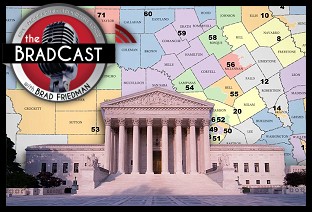 SCOTUS Ruling a How-To for Unlawful Gerrymandering on 'Eve' of Critical Election Year: BradCast' 12/17/25
SCOTUS Ruling a How-To for Unlawful Gerrymandering on 'Eve' of Critical Election Year: BradCast' 12/17/25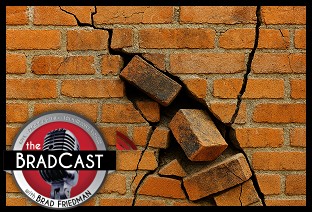 Bricks in the Wall:
Bricks in the Wall: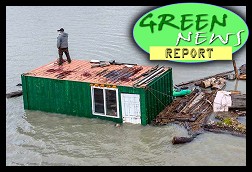 'Green News Report' 12/16/25
'Green News Report' 12/16/25
 'This One Goes to 11': Weekend of Violence, Tragic Murder of Rob Reiner: 'BradCast' 12/15
'This One Goes to 11': Weekend of Violence, Tragic Murder of Rob Reiner: 'BradCast' 12/15 Sunday 'WTF?' Toons
Sunday 'WTF?' Toons Trump Now Losing One
Trump Now Losing One 'Green News Report' 12/11/25
'Green News Report' 12/11/25 Dems Continue Stunning 2025 Election Streak: 'BradCast' 12/10/25
Dems Continue Stunning 2025 Election Streak: 'BradCast' 12/10/25 Petrostates and Propagandists Undermining Climate Science: 'BradCast' 12/9/25
Petrostates and Propagandists Undermining Climate Science: 'BradCast' 12/9/25 'Green News Report' 12/9/25
'Green News Report' 12/9/25 The High Cost of Trump's Terrible Policy Making: 'BradCast' 12/8/25
The High Cost of Trump's Terrible Policy Making: 'BradCast' 12/8/25 Sunday 'All in a Day's Work' Toons
Sunday 'All in a Day's Work' Toons Dems Fight to Avoid the GOP's Massive, Year-End Health Care Cliff: 'BradCast' 12/4/25
Dems Fight to Avoid the GOP's Massive, Year-End Health Care Cliff: 'BradCast' 12/4/25 'Green News Report' 12/4/25
'Green News Report' 12/4/25 A 'Flashing Red Warning Sign' for GOP: 'BradCast' 12/3/25
A 'Flashing Red Warning Sign' for GOP: 'BradCast' 12/3/25 Hegseth, War Crimes and DoD's 'Politicization Death Spiral': 'BradCast' 12/2/25
Hegseth, War Crimes and DoD's 'Politicization Death Spiral': 'BradCast' 12/2/25 Follow the
Follow the  With Thanks, No Kings and Good Cheer
With Thanks, No Kings and Good Cheer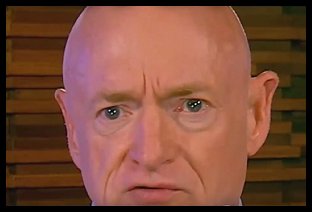 Presidential Illegality and Duty to Disobey
Presidential Illegality and Duty to Disobey President of United States Calls for Killing Democratic Officials: 'BradCast' 11/20/25
President of United States Calls for Killing Democratic Officials: 'BradCast' 11/20/25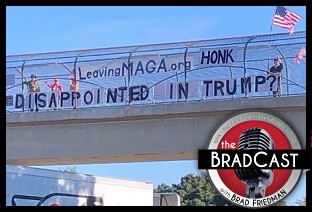 Is MAGA Finally Beginning to Fall Apart?: 'BradCast' 11/19/25
Is MAGA Finally Beginning to Fall Apart?: 'BradCast' 11/19/25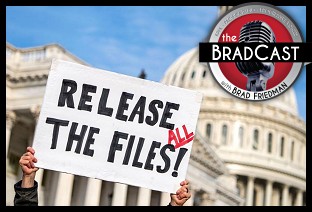 Trump's Terrible, Horrible, No Good, Very Bad Week: 'BradCast' 11/18/25
Trump's Terrible, Horrible, No Good, Very Bad Week: 'BradCast' 11/18/25
 VA GOP VOTER REG FRAUDSTER OFF HOOK
VA GOP VOTER REG FRAUDSTER OFF HOOK Criminal GOP Voter Registration Fraud Probe Expanding in VA
Criminal GOP Voter Registration Fraud Probe Expanding in VA DOJ PROBE SOUGHT AFTER VA ARREST
DOJ PROBE SOUGHT AFTER VA ARREST Arrest in VA: GOP Voter Reg Scandal Widens
Arrest in VA: GOP Voter Reg Scandal Widens ALL TOGETHER: ROVE, SPROUL, KOCHS, RNC
ALL TOGETHER: ROVE, SPROUL, KOCHS, RNC LATimes: RNC's 'Fired' Sproul Working for Repubs in 'as Many as 30 States'
LATimes: RNC's 'Fired' Sproul Working for Repubs in 'as Many as 30 States' 'Fired' Sproul Group 'Cloned', Still Working for Republicans in At Least 10 States
'Fired' Sproul Group 'Cloned', Still Working for Republicans in At Least 10 States FINALLY: FOX ON GOP REG FRAUD SCANDAL
FINALLY: FOX ON GOP REG FRAUD SCANDAL COLORADO FOLLOWS FLORIDA WITH GOP CRIMINAL INVESTIGATION
COLORADO FOLLOWS FLORIDA WITH GOP CRIMINAL INVESTIGATION CRIMINAL PROBE LAUNCHED INTO GOP VOTER REGISTRATION FRAUD SCANDAL IN FL
CRIMINAL PROBE LAUNCHED INTO GOP VOTER REGISTRATION FRAUD SCANDAL IN FL Brad Breaks PA Photo ID & GOP Registration Fraud Scandal News on Hartmann TV
Brad Breaks PA Photo ID & GOP Registration Fraud Scandal News on Hartmann TV  CAUGHT ON TAPE: COORDINATED NATIONWIDE GOP VOTER REG SCAM
CAUGHT ON TAPE: COORDINATED NATIONWIDE GOP VOTER REG SCAM CRIMINAL ELECTION FRAUD COMPLAINT FILED AGAINST GOP 'FRAUD' FIRM
CRIMINAL ELECTION FRAUD COMPLAINT FILED AGAINST GOP 'FRAUD' FIRM RICK SCOTT GETS ROLLED IN GOP REGISTRATION FRAUD SCANDAL
RICK SCOTT GETS ROLLED IN GOP REGISTRATION FRAUD SCANDAL VIDEO: Brad Breaks GOP Reg Fraud Scandal on Hartmann TV
VIDEO: Brad Breaks GOP Reg Fraud Scandal on Hartmann TV RNC FIRES NATIONAL VOTER REGISTRATION FIRM FOR FRAUD
RNC FIRES NATIONAL VOTER REGISTRATION FIRM FOR FRAUD EXCLUSIVE: Intvw w/ FL Official Who First Discovered GOP Reg Fraud
EXCLUSIVE: Intvw w/ FL Official Who First Discovered GOP Reg Fraud GOP REGISTRATION FRAUD FOUND IN FL
GOP REGISTRATION FRAUD FOUND IN FL

































